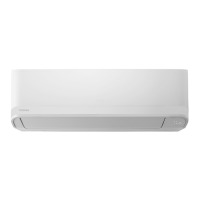
Do you have a question about the Toshiba RAS-B10 Series and is the answer not in the manual?
| Refrigerant | R32 |
|---|---|
| Control | Remote Control |
| Power Supply | 220-240V, 50Hz |
| Cooling Capacity | 2.5 kW |
| Heating Capacity | 3.2 kW |
| Energy Efficiency Class (Cooling) | A++ |
| Energy Efficiency Class (Heating) | A+ |
| Noise Level (Indoor) | 19 dB |
| Features | Timer |
| Noise Level (Indoor Unit) | 19 dB |
Indicates a high possibility of severe injury or death due to incorrect unit use.
Indicates that incorrect use may cause severe injury or death.
Indicates that incorrect use may cause personal injury or property damage.
Highlights risks of self-installation and improper use, requiring professional work.
Mandatory reporting of appliance installation to the local power supplier.
Visual representation of indoor and outdoor unit placement and connections.
Details of accessories and installation parts included with the unit.
Guidance on securing the outdoor unit with fixing bolts and nuts.
Criteria for selecting a suitable location for the indoor unit.
Recommendations for optimal indoor unit remote control signal reception.
Steps for creating openings and affixing the indoor unit mounting plate.
Guidelines and requirements for performing electrical connections.
Instructions for connecting the electrical wiring between units.
Specifies the correct length for stripping connecting cables.
Procedures for installing refrigerant pipes and drain hoses.
Ensuring proper downward slope for drain hoses to prevent water leakage.
Steps for securely attaching the indoor unit to the installation plate.
Criteria for selecting an appropriate installation location for the outdoor unit.
Detailed steps for flaring and tightening refrigerant pipe connections.
Procedure for removing air from the refrigerant cycle using a vacuum pump.
Specifies torque values for flare pipe connections to prevent leaks.
Connecting the power supply and connecting cable to the outdoor unit terminals.
Checking for refrigerant gas leaks using a detector or soap water.
Procedure to initiate a test run mode for the installed unit.
Setting remote control mode to A or B for multiple indoor units.
Configuring the unit to automatically restart after a power failure.
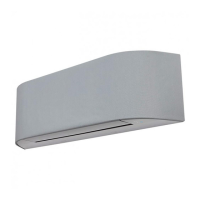

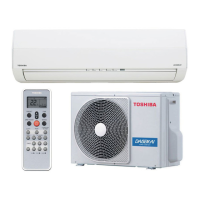



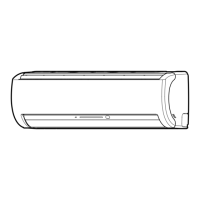

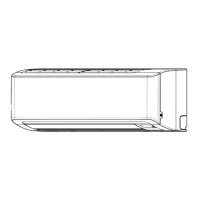
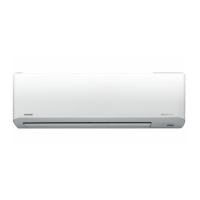
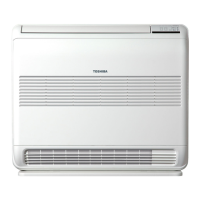
